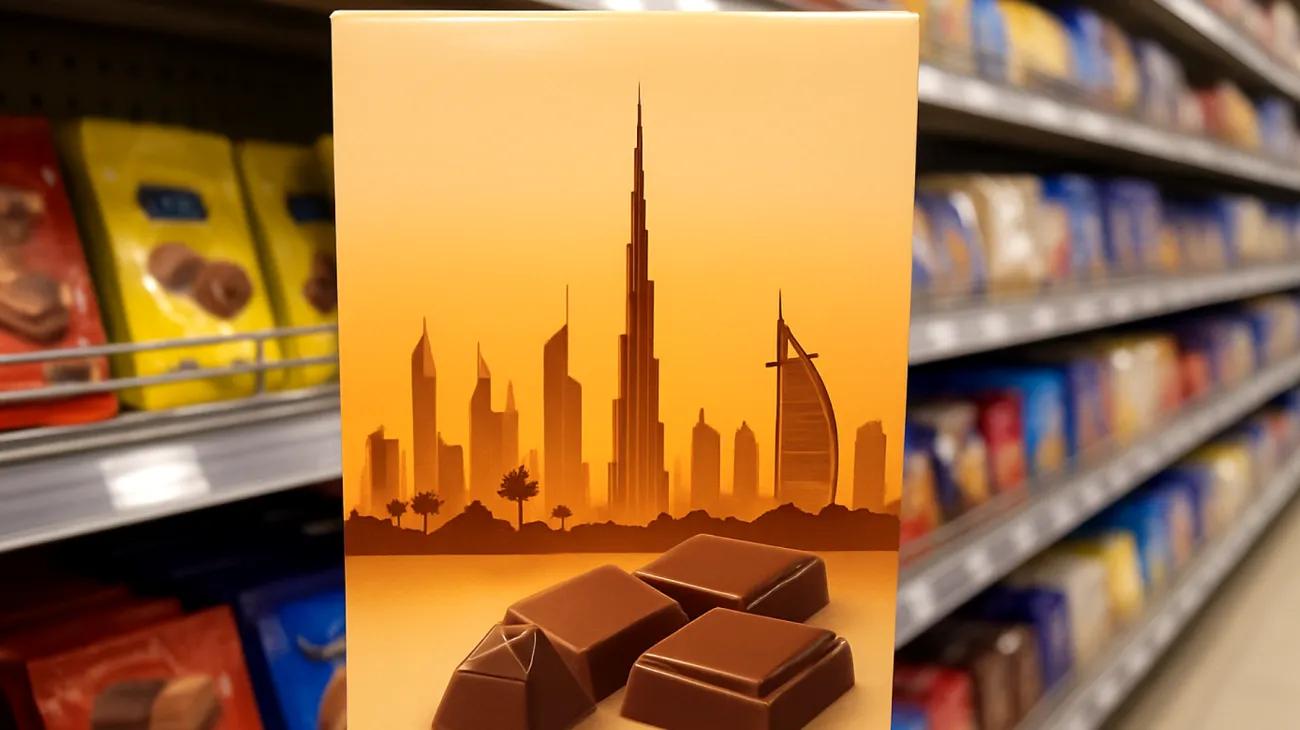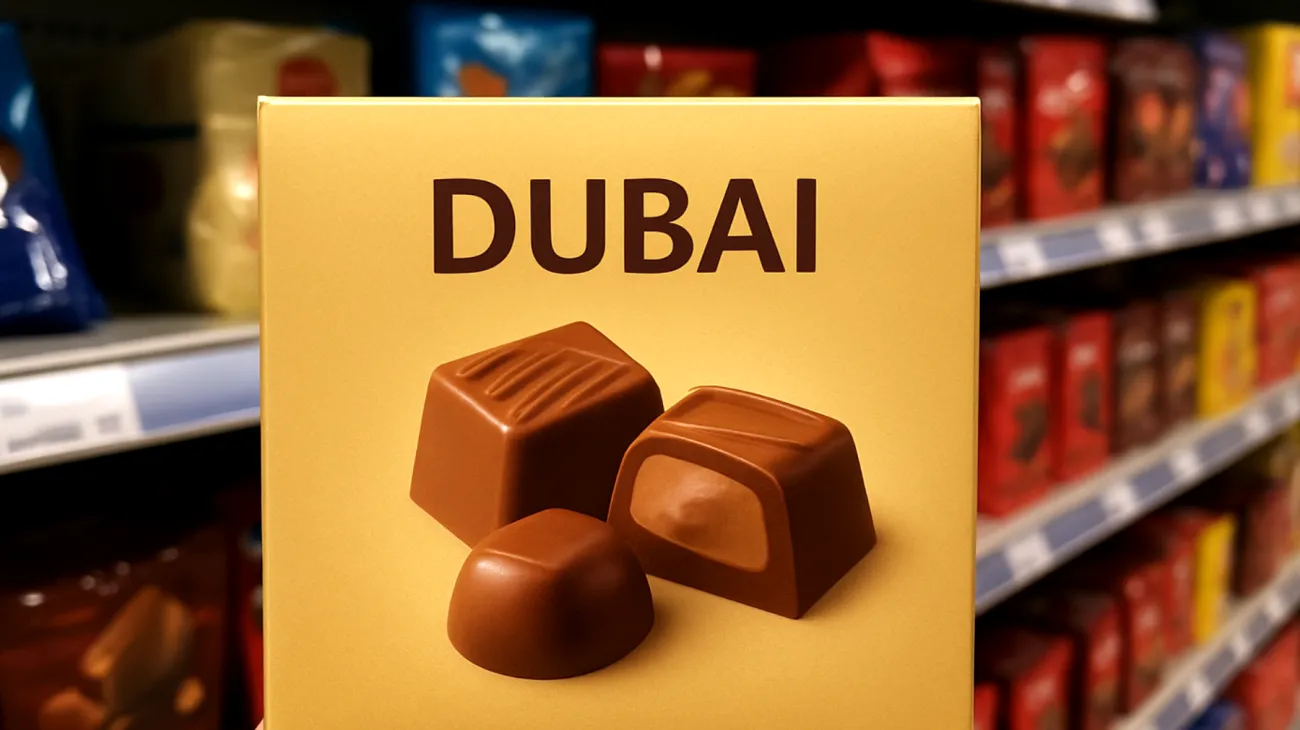Walking through the premium confectionery aisles of UAE supermarkets, you’ll notice an intriguing trend: chocolate products bearing exotic location names that promise authentic regional experiences. However, beneath these enticing appellations lies a complex web of regulatory standards and consumer protection concerns that every shopper should understand before making their next purchase.
Understanding Sales Denomination in Premium Chocolate Products
Sales denomination represents the legal name under which a food product is sold to consumers. For chocolate products, this designation carries significant weight in determining not only what you’re purchasing but also the quality and composition you can expect. When premium chocolate bars display geographic names or cultural references, these labels must comply with specific regulatory frameworks that protect consumers from misleading marketing practices.
The challenge emerges when exotic naming conventions create expectations that may not align with the product’s actual composition, manufacturing origin, or ingredient sourcing. This discrepancy between consumer perception and product reality forms the cornerstone of sales denomination misrepresentation in the confectionery sector. Smart shoppers need to look beyond the enticing names to understand what they’re actually buying.
The Regulatory Framework Governing Chocolate Labeling
UAE food safety regulations, aligned with international standards including GSO and Codex Alimentarius, establish clear guidelines for product naming and labeling. These regulations require that sales denominations accurately reflect the product’s true nature without misleading consumers about its origin, composition, or manufacturing process.
The regulatory landscape emphasizes transparency above all else. Ingredient transparency forms the backbone of consumer protection, ensuring that what you see on the package reflects what’s actually inside the wrapper.
Key Regulatory Requirements
- Complete ingredient listing: Products must clearly list all components in descending order by weight
- Origin clarity: Geographic references must accurately represent the product’s manufacturing location or ingredient sourcing
- Composition accuracy: Chocolate percentage and type classifications must meet established industry standards
- Manufacturing disclosure: Clear information about where and how the product was made
Common Misrepresentation Patterns in Premium Chocolate
Consumer protection specialists have identified several recurring patterns where exotic chocolate naming may not align with actual product characteristics. Understanding these patterns empowers you to make more informed purchasing decisions and avoid falling into common marketing traps.
Geographic Name Confusion
Products featuring location-specific names often create assumptions about ingredient sourcing or manufacturing origins that may not reflect reality. A chocolate named after a romantic European city might actually be manufactured in a completely different country using globally sourced ingredients. This isn’t necessarily deceptive if properly disclosed, but it can mislead consumers who assume geographic authenticity based on the product name alone.
The disconnect becomes particularly pronounced when premium pricing suggests exclusive regional sourcing, yet the actual ingredient origins tell a different story. Savvy consumers learn to separate marketing romance from manufacturing reality.
Cultural Heritage Implications
When chocolate products adopt names suggesting cultural heritage or traditional recipes, consumers naturally expect authentic ingredient combinations and preparation methods. However, mass-produced items may prioritize shelf stability and cost efficiency over traditional authenticity, creating a significant gap between marketing perception and actual product characteristics.

This pattern extends beyond simple naming conventions to encompass packaging design, color schemes, and marketing copy that collectively build expectations that the product itself may not fulfill.
What Consumers Should Examine Before Purchasing
Protecting yourself from sales denomination misrepresentation requires developing sharp label-reading skills and understanding key indicators that reveal a product’s true nature. Think of it as becoming a chocolate detective, looking for clues that reveal the real story behind the marketing.
Essential Investigation Points
- Manufacturing location: Check the “manufactured by” statements rather than relying solely on product names
- Ingredient origins: Look for specific sourcing information when geographic authenticity matters to your purchase decision
- Cocoa content verification: Ensure stated percentages align with your quality expectations
- Certification authenticity: Verify any regional certification marks or quality indicators
The Price-Value Equation in Exotic Chocolate Marketing
Premium pricing often accompanies exotic chocolate naming, creating situations where consumers pay elevated prices based on perceived authenticity or exclusivity. This pricing strategy becomes problematic when the actual product composition doesn’t justify the premium compared to similar products with straightforward naming conventions.
Research consistently shows that consumer perceptions are strongly influenced by marketing and packaging, sometimes more than by actual ingredient quality or origin. This psychological pricing effect means you might be paying extra for creative storytelling rather than superior chocolate.
The solution lies in comparing similar products based on actual ingredients, cocoa content, and manufacturing processes rather than relying on marketing narratives. This approach ensures your money goes toward genuine quality differences rather than sophisticated branding campaigns.
Protecting Your Consumer Rights
UAE consumer protection laws provide robust mechanisms for addressing misleading product information. When you encounter chocolate products where the sales denomination doesn’t accurately reflect the product’s true nature, multiple reporting channels exist to address these concerns effectively.
The reporting process requires maintaining purchase records and product packaging to enable effective complaint filing. Photographs of packaging, receipt documentation, and detailed descriptions of misleading elements strengthen your position when seeking resolution through official channels.
Consumer vigilance plays a crucial role in maintaining market transparency. When individuals report misleading practices, it creates a feedback loop that encourages manufacturers to prioritize accuracy over creative ambiguity in their product naming strategies.
Building Your Chocolate Expertise
Developing expertise in evaluating chocolate products based on factual information rather than marketing appeal transforms you into a more discerning consumer. This evolution in purchasing behavior protects your individual interests while encouraging manufacturers to prioritize transparency over creative naming strategies.
Authentic quality reveals itself through ingredient lists, manufacturing processes, and verifiable certifications rather than exotic names or romantic packaging. By focusing on these tangible elements, you ensure your premium chocolate purchases deliver genuine value regardless of how creatively they’re marketed. This approach empowers you to distinguish between products offering real premium experiences and those relying primarily on sophisticated marketing to justify their pricing structure.
Table of Contents

